1816
|
Для создания НОВОГО ПОСТА, необходимо выбрать нужный раздел ФОРУМА и создать в нем НОВУЮ ТЕМУ. Если вы новый пользователь, то вам нужно ЗАРЕГИСТРИРОВАТЬСЯ на форуме В этом разделе можно просмотреть все сообщения, сделанные этим пользователем. 1817
Видео / 2,5 года за 3 минуты« : 05.04.2017, 23:46:08 »Интересная наглядная анимация мировых океанских течений за период с июня 2005 по декабрь 2007 года в высоком разрешении от аэро-космического агентства США 1818
Юмор / "Боцман, продажная женщина!"« : 05.04.2017, 15:08:16 »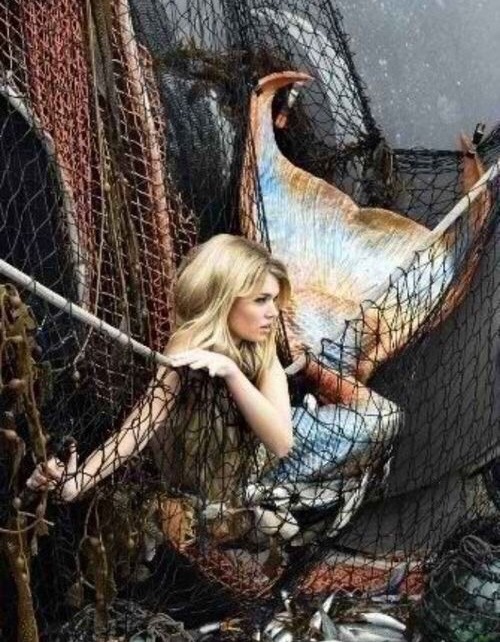 Флотские байки На седьмом месяце боевой службы (американцы говорят - «боевого патрулирования») в Средиземном море надоело все, кроме сухого вина, которое регулярно выдавалось подводникам перед обедом – в пайковом объеме 50 миллилитров. Все остальное не просто надоело, а остобрыдло до тошноты – и консервированный спиртом хлеб из пластиковых пакетов (говорили, что он вызывает язву желудка), и сто раз смотренные-засмотренные кинофильмы вроде «Афоня» или «Подвиг разведчика», и унылые доклады акустиков – «горизонт чист», и сам горизонт в окружье перископа – пустой и ровнехонький, будто проведенный по штурманской линейке… А особенно надоел мат, на котором уже не только выражали то или иное неудовольствие, а уже отдавали деловые распоряжения, думали на нем, и даже видели озвученные им сны. Однажды на служебном совещании в кают-компании старпом, отчаянный матерщинник, вдруг объявил: - Товарищи офицеры, мля… Вы – элита общества, а материтесь, как сапожники, как биндюжники и прочий пролетариат. С сегодняшнего дня категорически запрещаю материться, нах…! Замеченные в сквернословии, мля, будут – а) лишаться вина за столом, б) по итогам соцсоревнования будет снижаться на бал оценка и в)… Тут старпом подумал и выдал, самую главную кару: - и в) матерщинники, мля, не будут выпускаться на мостик курить. Вопросы есть? Всем все ясно? Понимаю, что сразу отвыкнуть от этой гребаной привычки трудно, поэтому секретчик распечатает и раздаст всем командирам боевых частей, а также особо несознательным группенфюрерам (командирам групп – Н.Ч.) и еще более несознательным старшинам команд словарик с матозаменительными словами. Выучить наизусть! Зачеты будем принимать мы с замом. Тут старпом выразительно посмотрел на меня, и я понял, что искать смягчающие эквиваленты придется мне. Но я быстро перевел стрелку на доктора: анатомическая терминология – это по его части. К ужину такой словарик был составлен, утвержден старпомом и отдан старшине-секретчику для размножения на пишущей машинке. Теперь в отсеках зазвучали такие речи: - Где минер? – Вопрошал помощник командира и, отыскав его глазами, продолжал. – Александр Николаевич, продажная женщина, если ваши бойцы выйдут на швартовку в этих измазанных калом жилетах, то у вас очень долго будет болеть анус! - А где же я новые в море возьму? - А вы старые отскребите, отстирайте, чтобы ни одна самка собаки не могла к вам пристать с сексуальными домогательствами! Или такое: - Кока ко мне! – Гневался в центральном посту старпом. – Где этот сталевар, несчастный?! Маврин, самка собаки, почему макароны выдал на баки недоваренными? - Так это, товарищ кап-нант… - Что «это», продажная женщина? Мичман-кок заглянул в спасительную бумажку: -Дак, две конфорки накрылись женским половым органом. То есть сгорели. - А где у нас старшина команды электриков? Куда эта продажная женщина смотрела? Мы же так без камбуза останемся! Мех, твои пи… голубые чудаки, совсем мышей не ловят. Сегодня опять в седьмом отсеке сопротивление изоляции гуляло как вошка по лобку. Вольно или невольно подражая старпому, вахтенный офицер выпытывал вахтенного штурмана: - Штурман, продажная женщина, где наше место? - Вот в этой точке. Но возможна невязка. - Возможна будет очень крутая вязка, если твоя невязка, как и в прошлый раз уйдет за десять миль. - Но я ж не виноват - мы третьи сутки без определения идем! Небо все время в тучах, ни одной измазанной калом звезды взять не можем. - Определяйся по изобатам, по маякам, по мужскому члену! Ты понимаешь, мы в залив входим! И ни где-нибудь, а на родине мафии! Подводная лодка вот-вот должна была войти в залив Теулада, что вдавался в южную часть Сардинии. Именно там Главный штаб нарезал нам позицию. Разведка сообщала, что в этом районе будут проходить морские учения НАТО. К тому же помимо всего прочего на Сардинии находилась база атомных подводных лодок США Маддалена, а южнее, на Сицилии – в городке с красивым названием Сигонелла располагалась американская же база морской патрульной авиации. И мы вошли в этот измазанный, пардон, калом залив, над которым то и дело кружили американские противолодочные самолеты – «Орионы» - в поисках подводной добычи. Их поисковые радары постоянно загоняли нас под воду. Заряжать по ночам аккумуляторную батарею было мукой мученической. Зарядку прерывали по первому же крику радиометриста: - По пеленгу сорок работает самолетная РЛС! Сила сигнала два балла! - Стоп зарядка! Срочное погружение! И так всю ночь… А тут еще одна радость: на ночном подвсплытии на сеанс связи подводная лодка подняла носом рыбацкую сеть. Слава Богу, не кормой, на винты не намотали. Но и носовые рули глубины могли так запутаться, что мама не горюй! Всплываем в позиционное положение. Боцман Егорыч с топором и ножом уходит на носовую оконечность – рубить и резать капроновые путы. И тут Егорыч, заядлый рыбак, унюхал, что сеть выставлена на кальмаров и в ее ячеях уже застряли несколько головоногих тварей. - Товарищ командир, пусть вынесут мне лагун, я кальмаров на весь экипаж наберу! Идея командиру понравилась: всем до чертиков надоели консервированный хлеб, консервированная картошка, консервированная капуста… Было бы просто здорово разнообразить рацион подводников свежими морепродуктами. И старпому эта мысль понравилась, и доктору, вылезшему на мостик «подышать воздухом через белую палочку здоровья». Боцману вручили большой обрез – камбузный оцинкованный таз, и тот принялся выбирать кальмаров из ловчей снасти. Но кто же знал, что хитро… э… попые сардинцы поставили на сети сигнальные датчики?! И очень скоро к нашей субмарине подвалил бесшумно – на водометах – полицейский катер с тремя «маринари карабинери». Те были готовы ко всему, но только не к абордажной высадке на неизвестную подводную лодку (мы по причине полной скрытности не несли никаких опознавательных знаков, даже бортовой номер с рубки сняли). Полицейские остолбенело взирали на фантастическую картину: под звездным (наконец-то!) небом Сардинии чернела большая океанская подводная лодка, а ее носу некая такая же темная личность тырит у бедных сардинских рыбаков кальмаров. Не берусь отрицать, что в головах карабинеров не возникли мысли о всесильной и вездесущей сицилийской мафии, которая обзавелась даже подводной лодкой. Но у нас были другие мысли – побыстрее скрыться с места, так сказать, нелегитимного пополнения продовольственных запасов. По всем законам международного морского права это была пиратская акция. Смягчало нашу вину то, что мы не нарушали террводы Итальянской республики. - Егорыч, продажная женщина, - кричал с мостика командир, - руби сеть на половой член и срочно вниз! Но боцман уже вошел в охотничий раж, вынимая из сети одного кальмара за другим. - Боцман, самка собаки!- Повысил голос командир. – На международный скандал нарываешься! Но боцману было не до международного этикета. Кальмары были крупные и десятирукие, точнее десятиногие, а у Егорыча было всего две руки, и надо было все время выпростать их от цепких щупалец. Тем не менее, борьба примата с беспозвоночными моллюсками шла успешно – обрез быстро наполнялся живыми «торпедами». Некоторые из них ловко выскакивали, используя силу реактивной струи, и боцман ловил их на палубе. Конечно, это было очень захватывающее занятие, и Егорыч ушел в него весь с головой, поскольку и голова, и плечи, и грудь были перепачканы чернилами, которыми кальмары пытались отбиться от двурукого врага. Некоторые несознательные личности вроде доктора с большим сочувствием смотрели на битву головорукого боцмана с головоногими тварями. - А знаете, - попытался он отвлечь командира от исполнения служебного долга, - у кальмаров три сердца. Но командиру было плевать, сколько сердец у кальмаров. - Боцман, трать-тарарать! – Гаркнул он весь морской простор. – Срочное погружение! Услышав понятные без перевода русские слова, итальянцы радостно закричали: - О, руссо облико морале! – Помахали нам руками и помчались в порт. Наверное, за подмогой. Однако мы успели погрузиться раньше… Возможно в сардинских тавернах до сих пор кто-то рассказывает историю про то, как русские подводники приходили в Тирренское море специально для того, чтобы воровать сардинских кальмаров, а местные рыбаки поднимают на смех рассказчика за его неуемную фантазию. Главное, что международных последствий не было, хотя итальянские карабинеры безошибочно определили национальную принадлежность субмарины (еще один аргумент за борьбу с матом – демаскирует военные действия). Кальмары же в приготовлении «сталевара» Маврина пришлись по вкусу не всем, отчего кока-инструктора стали звать «кальмоваром». Но все же нечаянная добыча несколько разнообразила наш стол и надолго задала тему для общих застольных бесед, а также для упражнения в остроумии: кто смешнее перескажет поединок боцмана, кальмаров, командира и карабинеров. На восьмой месяц плавания – это уже в Атлантике – на нас обрушилось новое поветрие. Помощник, отвечающий за секретную библиотеку, нашел в ней грифованную брошюру, невесть как попавшую в комплект секретной документации корабля, и более того – внесенную в опись! Брошюра, изданная в 1938 году, имела гриф «Для служебного пользования. Только для начсостава» был проштампована печатями НКВД и называлась «Словарь уголовного жаргона». Конечно же, словарь пошел по рукам, и вскоре во всех отсеках довольно бойко «ботали по фене». - Штурман, падла! – Радостно кричал с мостика вахтенный офицер минер Симаков. – Записать в журнал: «время захода балдохи 20 часов двадцать минут». - Что такое «балдоха»? – Недоумевал лейтенант-штурманенок. - Солнце! – Пояснял доктор. – Спецлитературу надо учить. Кстати, доктора теперь называли «лепилой», минера – «бомбилой», помощника – почему-то «щипачем», радиотелеграфистов – «стукачами», акустиков – «глухарями», а кают-компанию – «малиной». - Товарищи фраера, - объявлял старпом за столом, когда командир уходил на мостик, - после ужина соберемся на малине на служебное толковище за исключением тех, кто не стоит на шухере. Кто опоздает – тому пасть порву на свастику. Кстати, кто сегодня вместо команды «все вниз» крикнул «обрывайся!» Симаков? А кто сдуру в вахтенный журнал записал?! В следующий раз такого леща замастырю родная мать - без бирки не узнает! © Николай Черкашин 1819
Машинный телеграф / Перенесено: Интервью с исполнительным директором Vladivostok Boat Show« : 04.04.2017, 19:40:58 »1820
Мероприятия: Что? Где? Когда? / Перенесено: Покраска судна необрастайкой« : 04.04.2017, 19:40:32 »1822
Your topic / Out of the blue: The healing power of the sea« : 02.04.2017, 21:42:54 »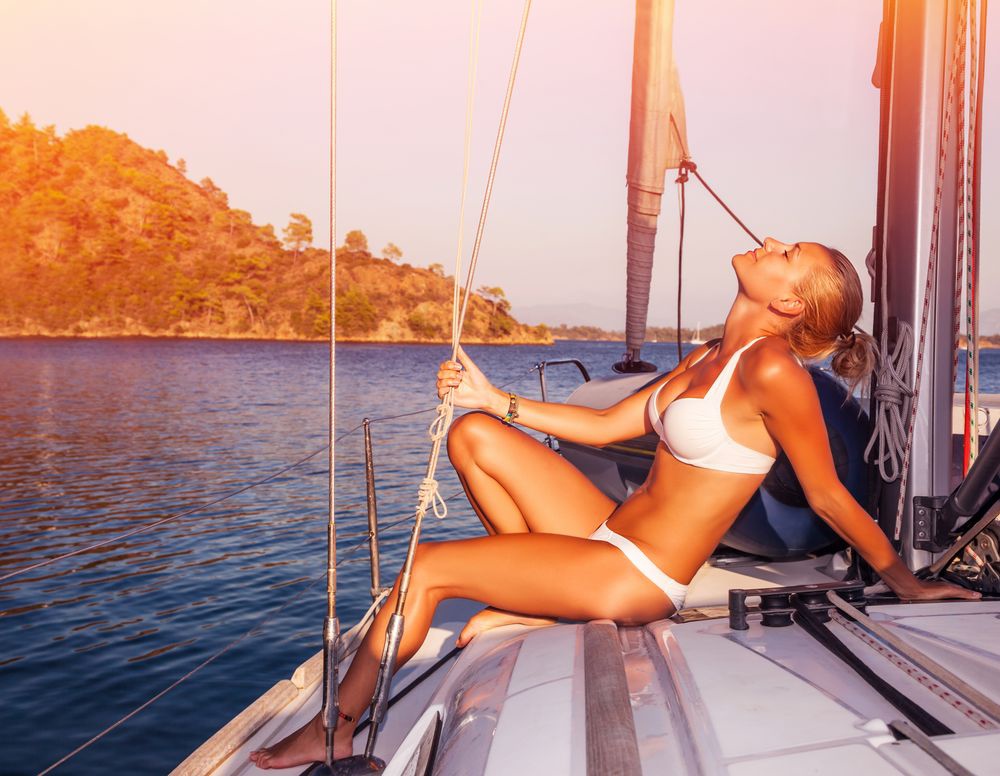 The sea has long been recognised for its mysterious healing powers with seaside resorts all the rage in Victorian times. A few years ago my brother fell ill with a severe mental illness. I reasoned if the sea could calm itself, maybe it could help calm his mind. During a storm we walked to a cliff top and watched the waves smash onto the rocks below. Breathing in the salt rich spray we felt rejuvenated. Why sea air and sea water might have helped is still a mystery, but it's a treatment long forgotten in the era of modern medicine. We live on the edges of a blue planet that should be more appropriately called Ocean than Earth, and maybe we've simply forgotten where we came from. I persuaded my sceptical brother to spend some more time out on the water and we kayaked across Sydney Heads. Unfortunately, he tipped over in a rough section and I had to rescue him, and he was terrified the sharks would get him. He wanted to retreat to the safety of the land but the next week I coaxed him onto a much bigger boat, and we sailed out to sea and spent a few nights on board. His mood had clearly changed and he said he felt like he had some strength now to face his invisible demons. His doctor though didn't share his new-found faith in this the sea and doubled his dose of anti-depressants and prescribed a potent anti-psychotic to help him sleep. 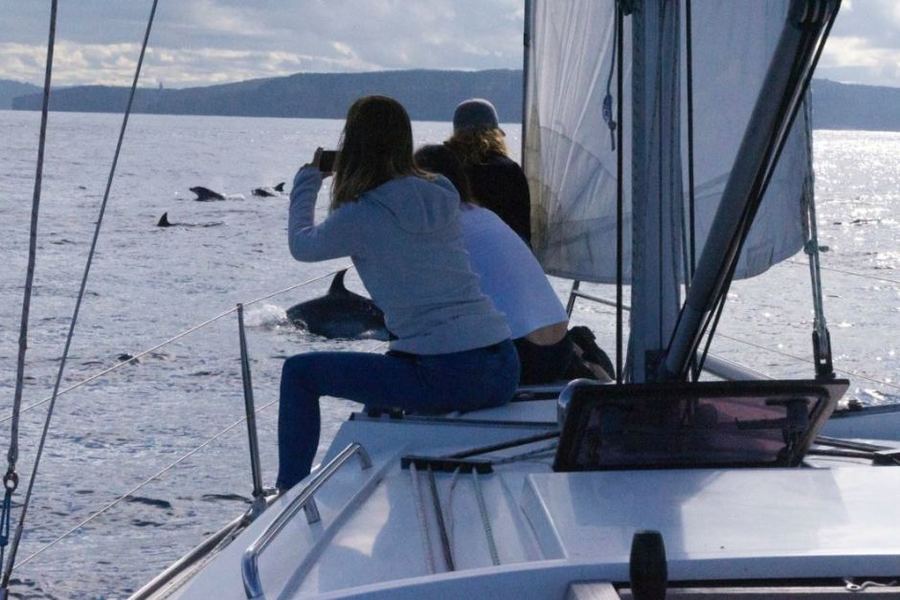 Mind over water I couldn't get any scientists to test my theory, mainly because of lack of research funding. One suggested I do my own qualitative study so I wrote an article about my old fashioned "sea-cure" in a mental health publication and about 20 people jumped at the chance to take part in some trials. Understandably about half pulled out at the last minute saying they were not feeling well enough. But just as many managed to overcome their trepidation and the first group of three women had no sailing experience but plenty of experience with mental illness. They'd all spent time in psych wards and had tried many treatments, all to no avail. Lily admitted she was at her wits' end as her marriage and stellar career as a lawyer had been destroyed by bipolar disorder. On a yacht I told them the toilet was called "the head" because they used to be at the front of tall ships as they could only sail with the wind behind — so the smell went forward. This seemed a good time to explain the science behind our new "sea cure" as to whether mental illness starts in your head or the other end. I explained that if all the organs in the body were given a vote as to which one was in charge, the brain would surely win. However, the brain has an unsung silent partner in the gut. A colony of microbes, known as the "second brain" or core microbiome, produces the vitamins and chemicals like serotonin and dopamine that are essential for brain function and our immune systems. "The new field of microbiota research is telling us that our gut microbes are absolutely central to health and disease," Professor Felice Jacka — director of Deakin University's Food and Mood Centre — said. "These bugs strongly affect our metabolism, body weight, immune system and, the new evidence suggests, our mood and behaviour." 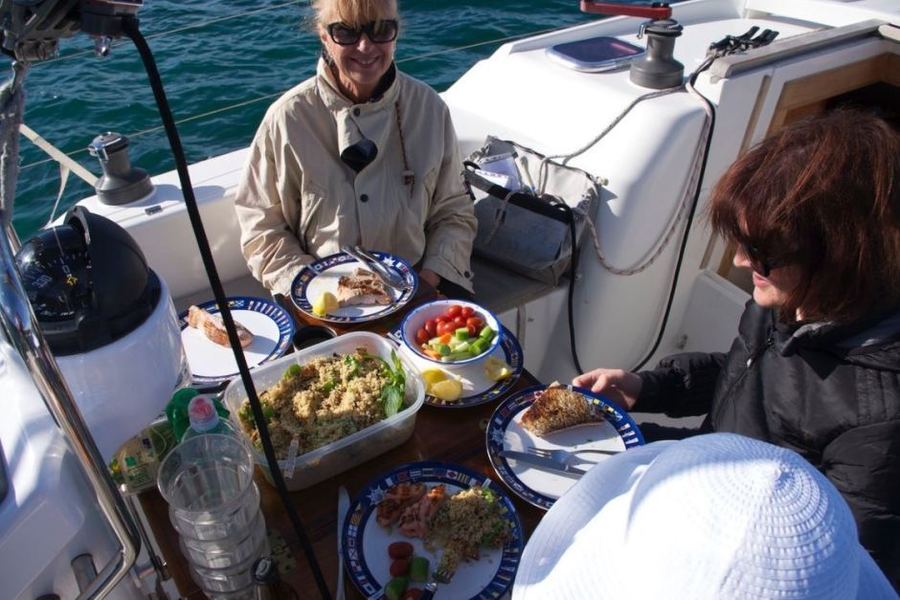 'Where are all the crazy people?' The women pick up the basics in a pleasant 12-knot southerly. We tack down the very empty harbour and they start to feel at ease on the water as the conversation flows. There's a certain solidarity among people who have all experienced the same nightmare with lives seemingly randomly shattered for no reason. After a few hours of sailing, I begin to explain the next part of the gut theory. All good skippers know if you want to avoid a grumpy crew they must be fed … and it's the same for microbes. The food we eat shapes the colony in our gut with beneficial bacteria needing high-fibre foods to survive. Known as prebiotics, food such as onions, lentils, oats, and pearl barley survive the trip through our stomach and small intestines intact to feed the microbes in the colon or bowel. "Mmm, food for bacteria," they all say and I admit it doesn't sound too appetising, but it's a lot more familiar than most people think, as I break out a box of carrots, celery sticks and hummus dip, pickles, and some cheese. 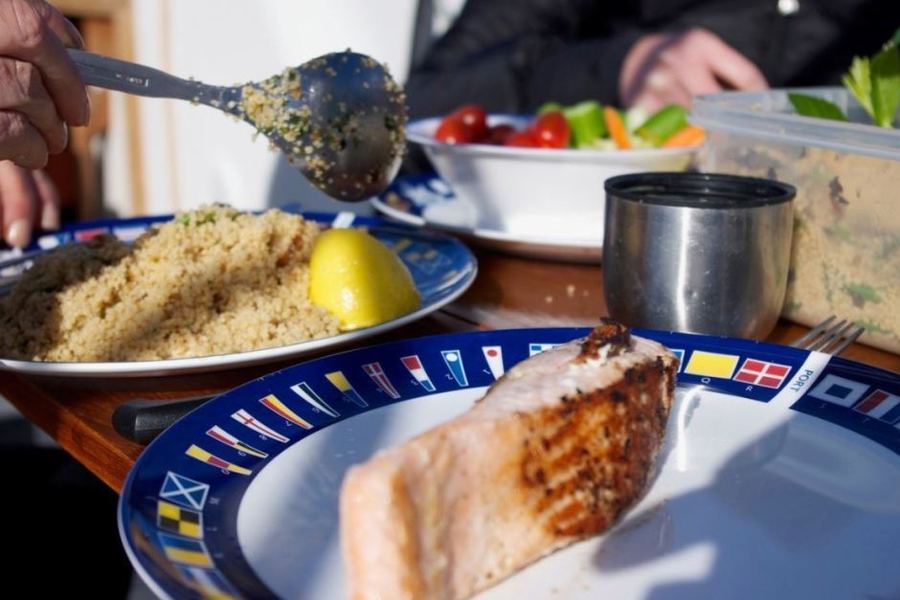 Besides being gut-friendly I explain it's sailing-friendly as it can be eaten on the go. The experience is having an immediate impact with Lily smiling and saying this is one of her rare "good" days. The three became more confident on the helm, keen to take the tricky challenge of steering with their eyes closed while using just the feel of the wind on their face to maintain a course. We head back towards Manly for lunch and a swim. Dropping anchor at an empty Store Beach, Lily can't help but comment: "Where are all the crazy people? Oh, there they are in the city." The prebiotic main course was freshly barbequed chicken breast on a pearl barley salad made with fresh parsley, garlic, olive oil, tomato, cucumber, Kalamata olives, salt, pepper, and mint. For dessert is rhubarb, yogurt, and shavings of dark chocolate. They are all pleasantly surprised and want to know more about how to cultivate their good gut bacteria. 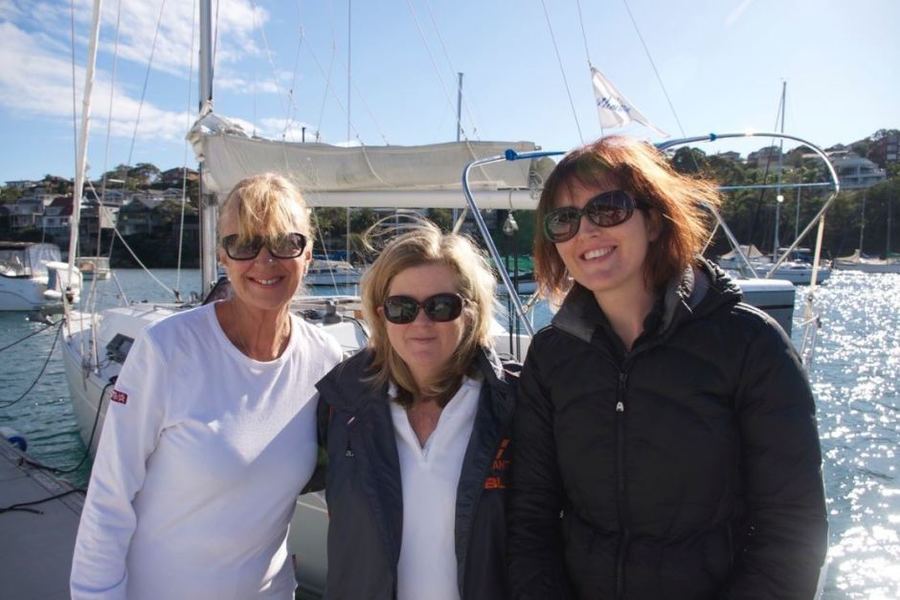 Eating habits have 'huge implications' for mental health In recent clinical trials, Deakin University's Food and Mood Centre found at least a third of the people with depression reported a significant improvement in their mood and symptoms after switching to a Mediterranean-style diet. "We now have many, many, scientific studies, across countries and age groups, telling us that diets high in unhealthy 'junk' foods increase the risk for depression, while a healthier diet — with nutritious foods such as vegetables, legumes, nuts, fish, quality, unprocessed red meat and the like — protects against depression and related mental health problems," Professor Jacka said. All three women on board admitted they had neglected their diet, and they are not alone. "In Australia, less than 5 per cent of us are eating enough vegetables and legumes, while it's even worse for children — less than half a per cent of children are getting enough veggies in their diet," Professor Jacka said. "This has huge implications for both our physical and mental health." Over several months about 10 people, aged from 19 to 61, took part in the sailing trials. All the trainee sailors reported a marked and lasting improvement in mood and they are all trying harder to eat for their gut health. One young woman in her 20s, who had struggled for years with depression, has finished her degree and is now working as a journalist in the country. As for the first three: Lily has moved into her own home and returned to work as a lecturer in law at university, Juliette published her dream book Cocktails and Mocktails and Ann is a busy artist and even admits looking forward to cooking. Maybe it's all just luck as to how we fare in life, but science is confirming that our gut instinct is very real and time spent on the water can help people with a mental illness get back on course. By Michael Troy 1823
Видео / Никогда не шутите со стихией!« : 01.04.2017, 23:42:08 »Очередное напоминание о том, как ничтожен на самом деле "царь природы". Инцидент произошел 31.03 во время любительской регаты в King Harbor, Калифорния. В этот раз все обошлось - экипаж самостоятельно выбрался на берег, но лодка - в лоскуты 
1824
Машинный телеграф / Встреча с представителями российских деловых кругов« : 01.04.2017, 00:30:26 » Фото ИТАР-ТАСС Москва, Кремль Вчера в Кремле состоялась традиционная весенняя встреча Владимира Путина с представителями российского бизнес-сообщества – главами крупнейших частных компаний и компаний с государственным участием, руководителями банков, общественных организаций и объединений предпринимателей. Об этом сообщила пресс-служба главы государства. Подобные встречи Путина с российскими бизнесменами стали уже традицией. На аналогичном мероприятии в конце прошлого года президент подчеркнул, что государство будет поддерживать амбиции отечественных компаний, в том числе в вопросах присутствия на глобальных рынках, создания прорывных технологий и уникальных продуктов. Путин также отметил, что ответом РФ на санкции будет "расширение свободы предпринимательства, защита собственности, прав всех, кто честно работает, делает свой бизнес". Знаковым эпизодом данного мероприятия стал заход в акваторию реки Москвы и швартовка у Софийской набережной, напротив Кремля яхты российского миллиардера, совладельца ОАО «Еврохим», Андрея Мельниченко, который экстренно прервал свой отпуск и лично привел судно из Гибралтара. 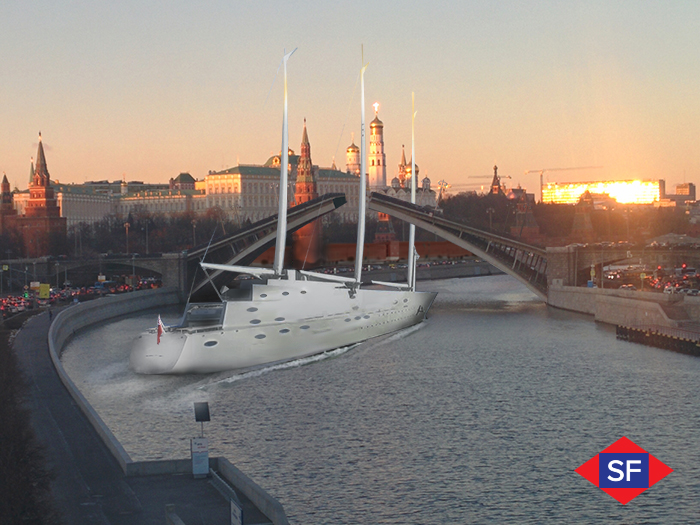 Высота мачт яхты составляет более 100 метров, поэтому для ее проводки была организована уникальная операция по разводу Большого Каменного моста.  В связи с этим в течение всего дня в обоих направлениях было перекрыто движение между ул. Серафимовича и ул. Знаменка и Моховая, что привело к транспортному коллапсу 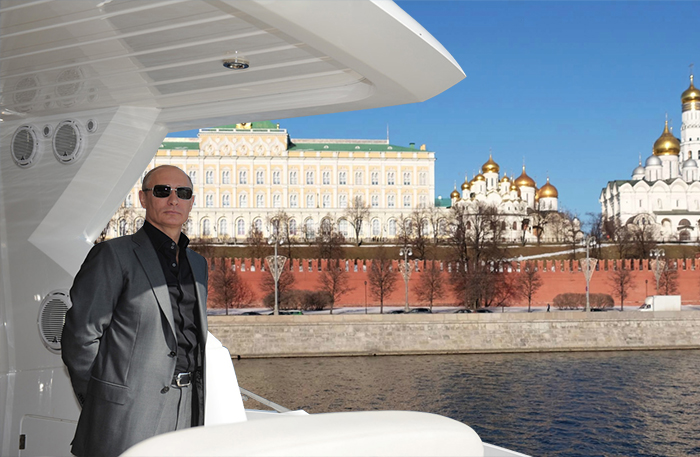 Владимир Путин лично осмотрел корабль и между делом заметил владельцу: «А что же Вы, Андрей Игоревич, под чужим флагом ходите?» (Яхта зарегистрирована в Великобритании). На что Мельниченко официально пообещал президенту в ближайшее время изменить регистрацию судна на российскую. 1825
Полезные материалы / Шкиперам на заметку. Аварийная ситуация« : 31.03.2017, 22:09:53 »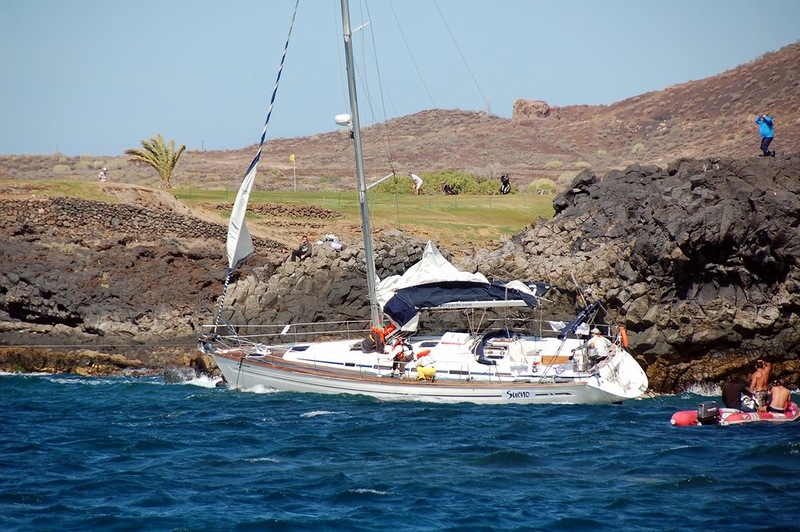 Ситуация: яхта выходит из марины и почти сразу срабатывает пожарная сигнализация. Пожар в моторном отсеке! На самом деле был не пожар, просто вытек тасол из малого контура охлаждения, и движок задымил. Капитан вполне логично выключает движок, ставит парус и решает под вернуться в марину под парусом. Ветра дофига, дует примерно 25-30 узлов, в акватории марины примерно двадцатка. Свободного места в марине не то, чтобы много, но и вполне достаточно, чтобы встать лагом сразу на входе. Вход в марину за молом, и входить нужно с поворотом оверштаг. Но непосредственно на входе почему-то экипаж растравливает гика-шкот, лодка теряет ход и благополучно дрейфует на подветренные скалы. Дальше - посадка на киль, спасательная операция, разбитое перо руля и те-де. Слава Богу, что все живы-здоровы. Мой добрый совет, если позволите. Я бы не торопился входить, если нет уверенности, что владеешь навыком парусной швартовки (а это был факт). Можно было бы просто походить туда-сюда в галфинд под одним гротом, успокоиться (почти пожар но судне - еще тот стресс!), и потом принимать решение о вызове помощи, или, например, той же швартовке под парусом. Но что очень понравилось, вся команда проявила себя молодцом. Никаких дополнительных ошибок больше уже не делали, все молодцы! Андрей Шарков 1826
География / Ученые признали существование облаков "Судного дня"« : 26.03.2017, 00:35:55 »Всемирная метеорологическая организация официально признала редкий тип облаков и включила их в новое издание Международного облачного атласа. The Verge отмечает, что особый вид облаков, которые принимают устрашающие очертания (например, человеческих лиц), известен довольно давно, однако до сих пор не был толком изучен и описан. Далеких от метеорологии людей это явление зачастую пугало, так как ассоциировалось с Судным днем или нашествием инопланетян. Более девяти лет назад "апокалиптическими облаками" заинтересовался основатель Общества любителей облаков, английский писатель Гевин Претор-Пинней. В 2009 году он предложил присвоить им название Undulatus asperatus (лат. – волнисто-бугристый) и включить в общую классификацию облаков. Добиться своего ему удалось только восемь лет спустя. В новом издании атласа облака называются asperitas (лат. – шероховатость, неровность), так как по правилам название должно представлять собой имя существительное. Кроме этого, атлас пополнили еще 11 типов облаков — volutus, flumen, fluctus и другие. Международный облачный атлас был впервые опубликован еще в 1896 году. Последний раз новый тип облаков вносили в него в 1951 году. Источник 1827
Видео / В коллекцию обучающего видео« : 24.03.2017, 21:55:13 »Уникальный учебный материал для экономных 2 в 1: универсальное видео-пособие по брочингу и MOB. Делай с нами, делай как мы, делай лучше нас  P.S.: Никто не пострадал 1828
Машинный телеграф / Яхты на башнях« : 24.03.2017, 18:08:11 »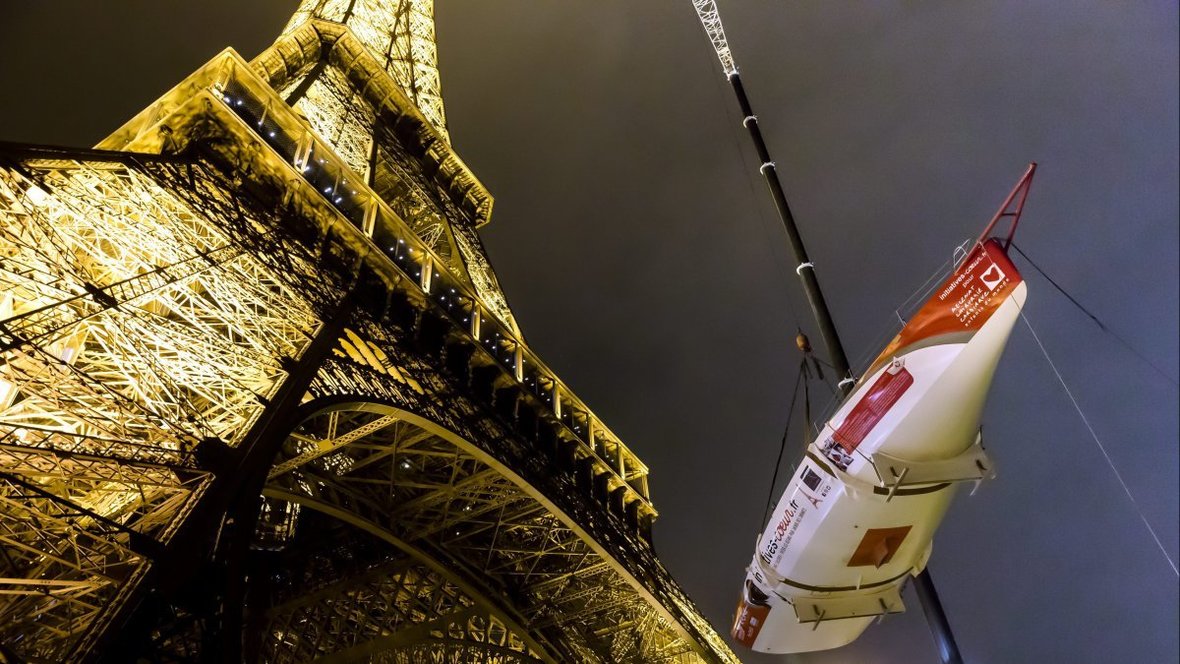 Красно-белую IMOCA Initiatives Coeur Танги де Ламотта (Tanguy de Lamotte), участвовавшую в Vendee Globe 2016-2017, но не фининшировавшую из-за поломки мачты, подняли на высоту первого этажа Эйфелевой башни. Акция была приурочена к объявлению об участии де Ламотта в следующей безостановочной кругосветке Vendee Globe, стартующей в 2020 году. Танги будет соревноваться на яхте Жереми Бею (Jérémie Beyou) Maître CoQ, которой дадут название Initiatives Coeur и перекрасят в цвета этого благотворительного фонда, спасающего жизни детям с больным сердцем. Перед кругосветкой бывшая Maître CoQ пройдет проверку регатой Transat Jacques Vabre, в которой де Ламотт будет участвовать вместе с английской яхтсвумен Сэм Дэвис (Sam Davies). Уменьшенную версию лодки Initiatives Coeur даже запускали в космос на борту МКС. 1829
Your topic / The Story of Tall Ship Avatar« : 24.03.2017, 17:12:34 »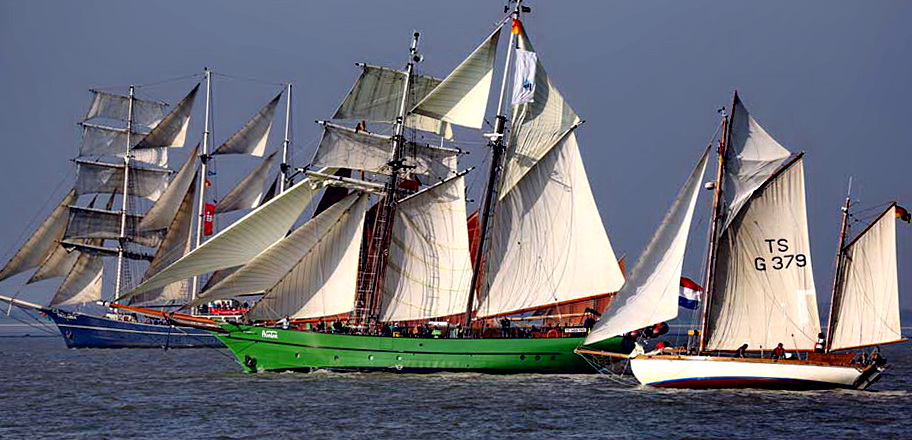 Christened during the Harlingen Tall Ships Races in 2014, Avatar is a tall ship that many now know and love. If you’re attending Kiel Week, Hanse Sail Rostock or Fête Maritime de Brest in 2016 you’ll be sure to see her, with a striking green hull and decorative characters from the namesake 2009 blockbuster ensuring she truly is unmistakable; but this beautiful topsail schooner holds so much more than what’s on the surface, with a history dating back more than seven decades. 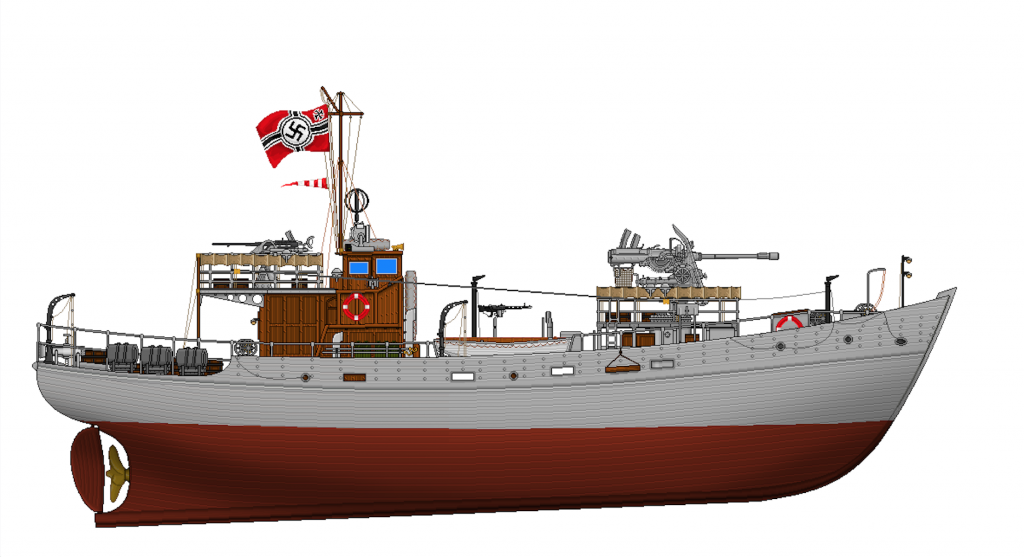 Constructed in a shipyard in Wolgast, 1941, the vessel you see today was originally born a Kriegsfischkutter (KFK), a ‘War Trawler’ that served the Kriegsmarine flag of Nazi Germany. With no name she simply carried her yard number 401. 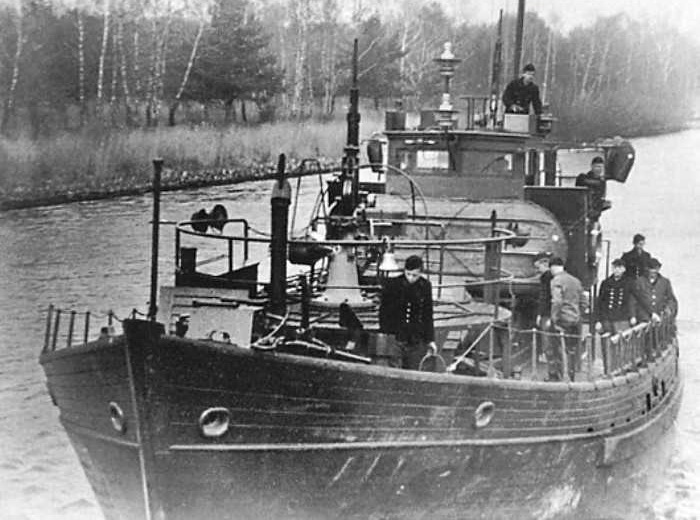 During the Nazi occupation of Western Europe the Germans would use such vessels as outposts almost everywhere along their coastlines for operations like minesweeping, submarine patrols and anti-aircraft escorts. As a result, KFKs like 401 were among the most capable and heavily armed vessels of their time, sporting the 88mm (FLAK) and 105mm guns that quickly gained a reputation for horror among British and American pilots: they were heavy, quick firing and exceptionally accurate.  Like her many sisters, the design of 401 adopted that of a fishing trawler to provide standout seaworthiness and a fine disguise for such a heavy arsenal of weaponry. In addition, a composite build hull provided her with a little extra protection from magnetic mines. 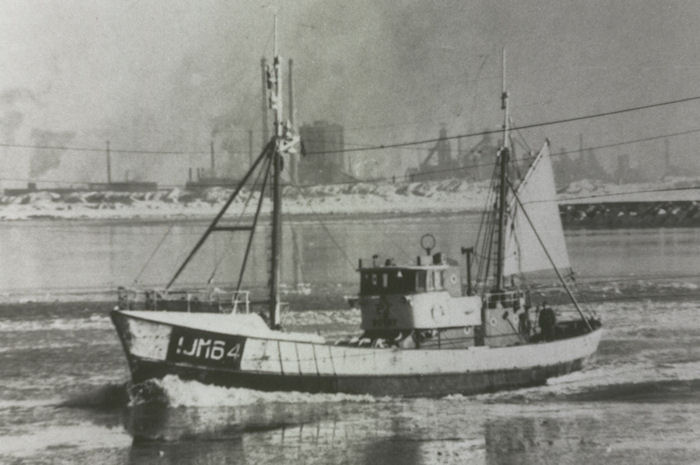 In a stroke of luck not shared by all, KFK 401 was able to survive the war, with records showing her being towed to the Netherlands in 1954 to receive a major overhaul at the Scheepswerf De Rietpol shipyard. Her wooden planking was replaced by steel hull plates and the deck fitted with fishing gear. Operating under the Amsterdam company Nederlandse Houtimport Maatschappij she was renamed to “AM-26 Nehim IV” and entered service as a North Sea side trawler later that year. Throughout the next 2 decades she was sold and renamed many times, becoming “YM-64 Rony” in 1958, “KW-40 Alie” in 1966, “IJM-15 Alice Therese” in 1972 and “BU-152 Grietje Maria” that same year. In the latter years she was also used for sport fishing, before eventually being sold for sale or scrap in 1975. 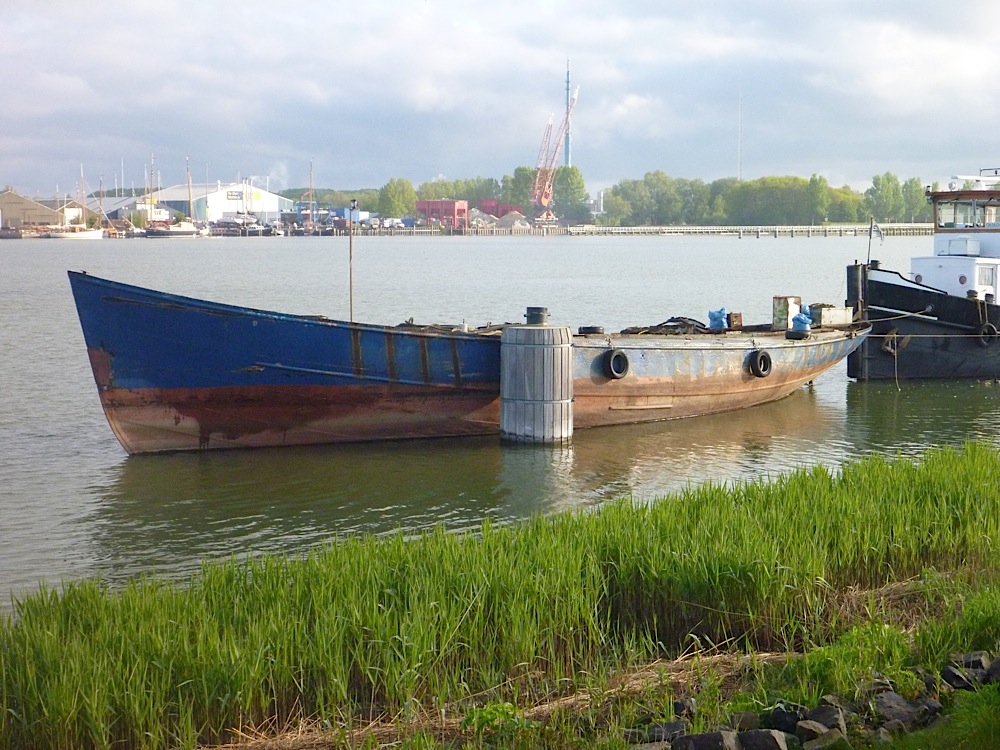 Eight years later she was bought by Bill Haenen who planned to rebuild her as an offshore supplier or guard ship, but that was never realised. In 1997 she was bought and renamed “Grietje Maria” by an Englishman who dreamt of converting her to a schooner. His unfortunate passing then placed the project on hold, but in 2010 a man named André Hanzens decided he could make the dream a reality with just a few updates to the original design. 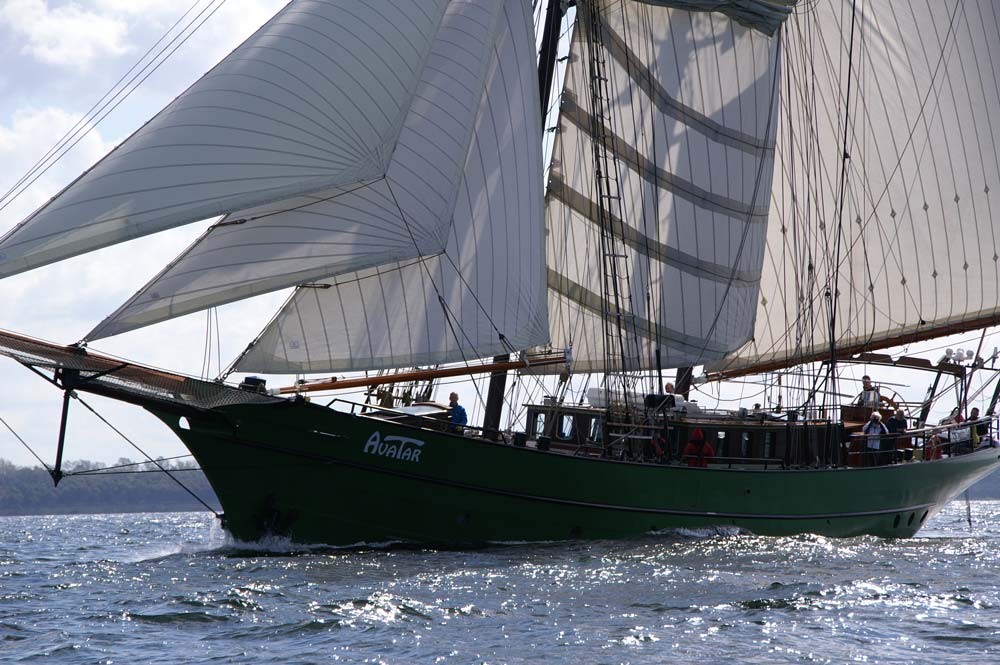 KFK 401 had indeed found her luck again, setting sail as the tall ship Avatar in mid-2014 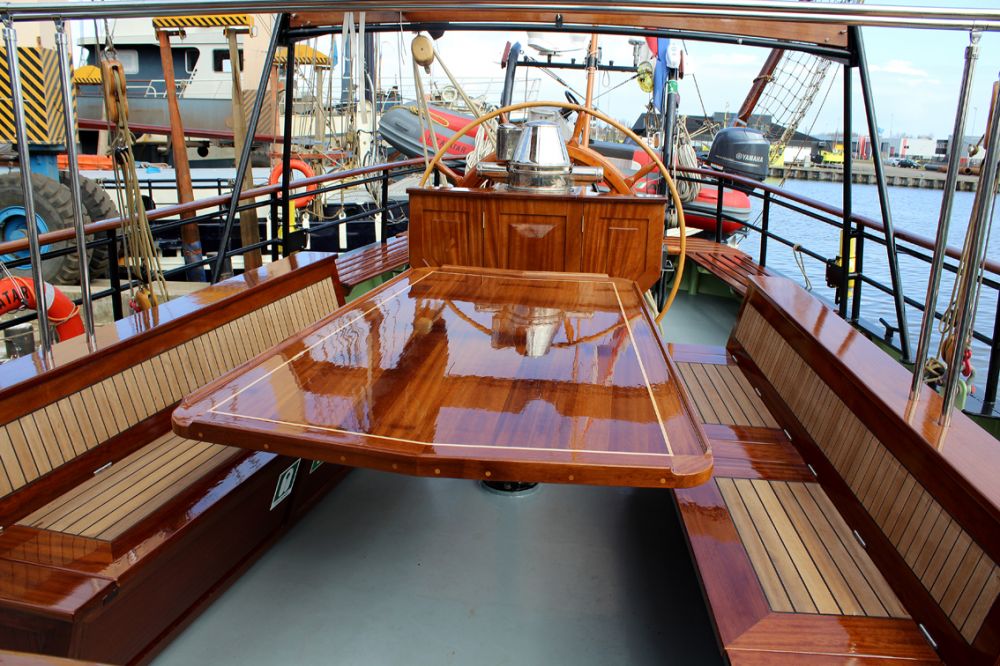 Today she offers sailing holidays and charter opportunities across the North and Baltic Seas, visiting many key European events such as Kiel Week, Hanse Sail Rostock and Fête Maritime de Brest. 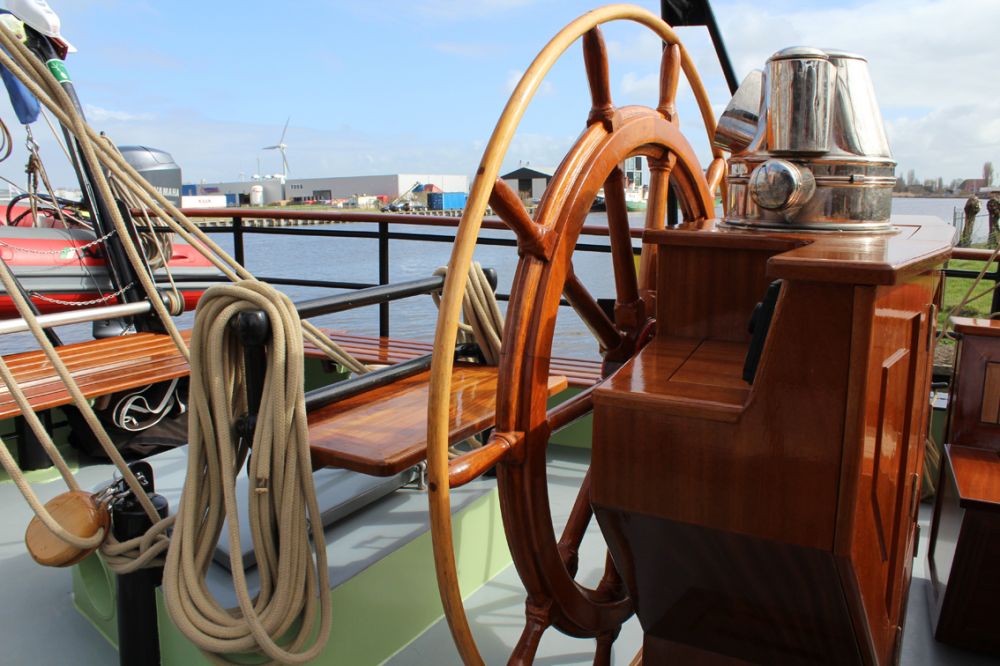 The drawings and images you see here show just how much this vessel has changed in her 72 years of service, and she’s not the only one, so next time you’re walking the deck of a tall ship at one of the many events we list, take a moment to find out where that vessel originated; you might be surprised by what you’ll learn! 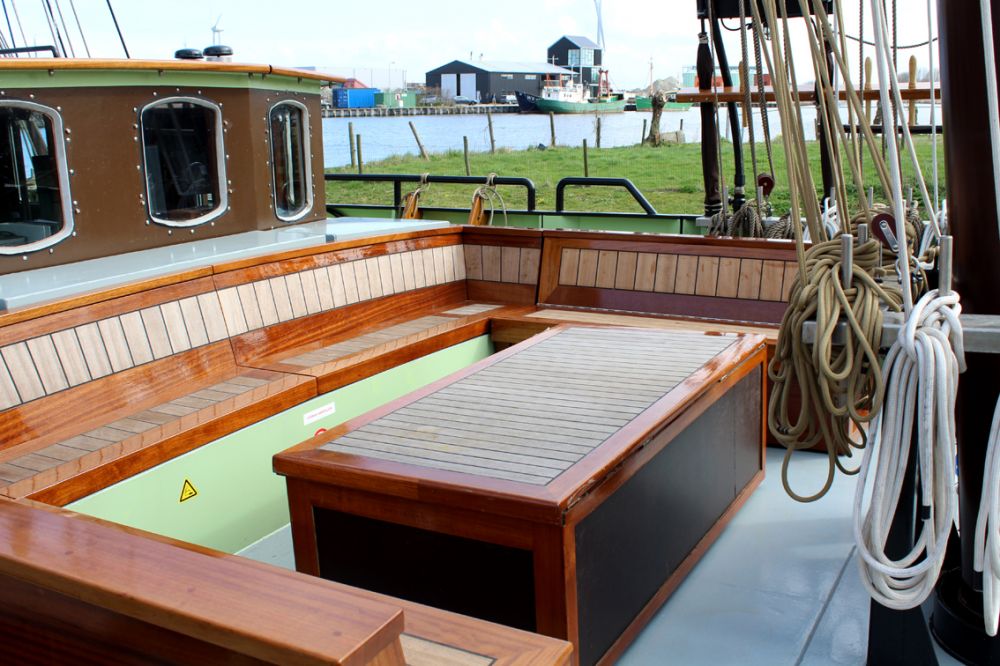 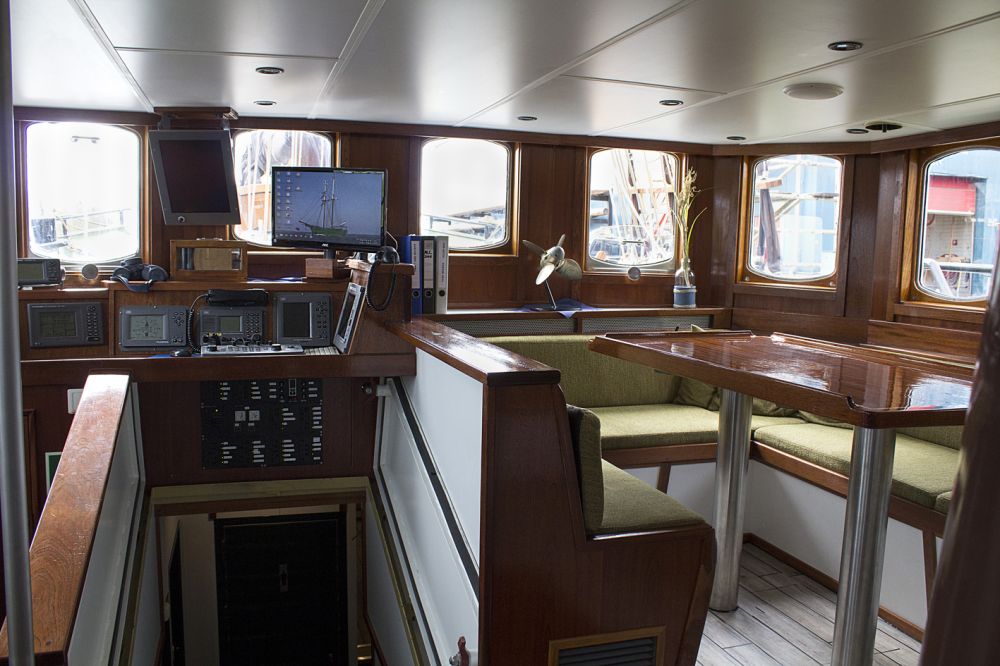 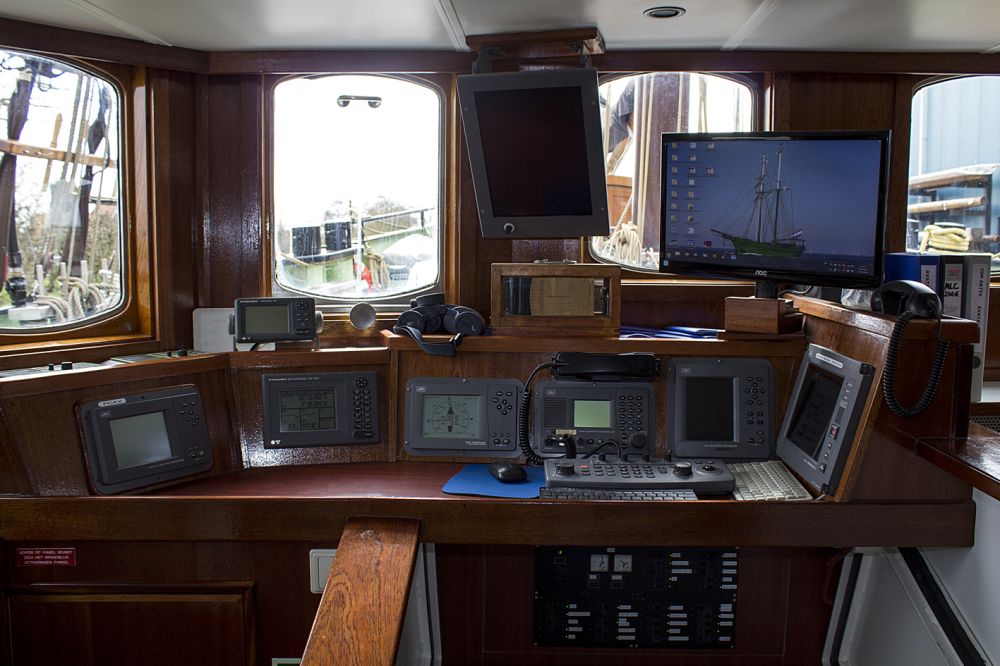 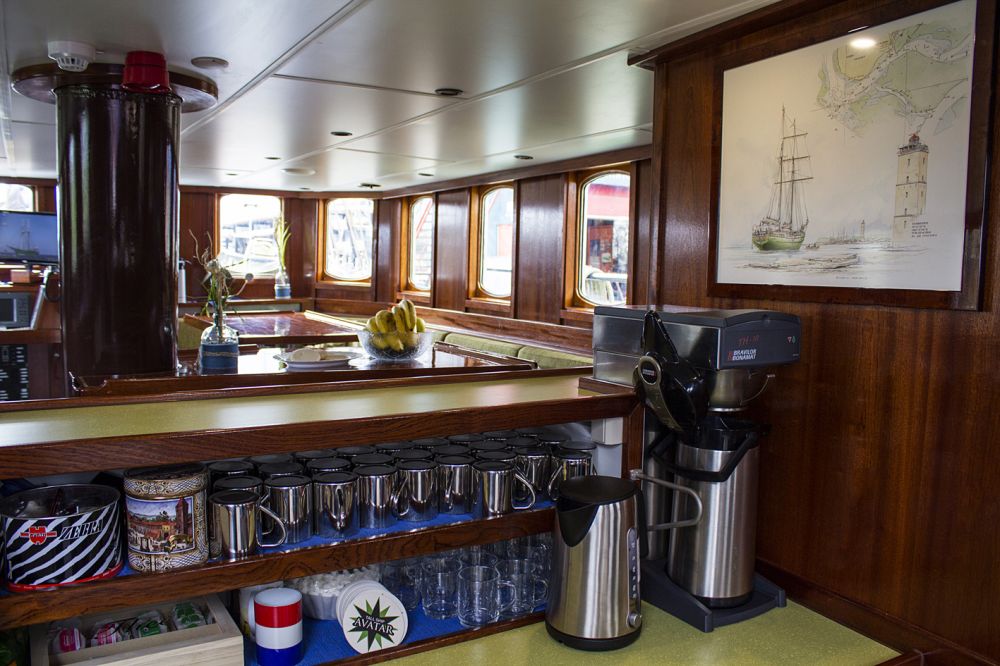 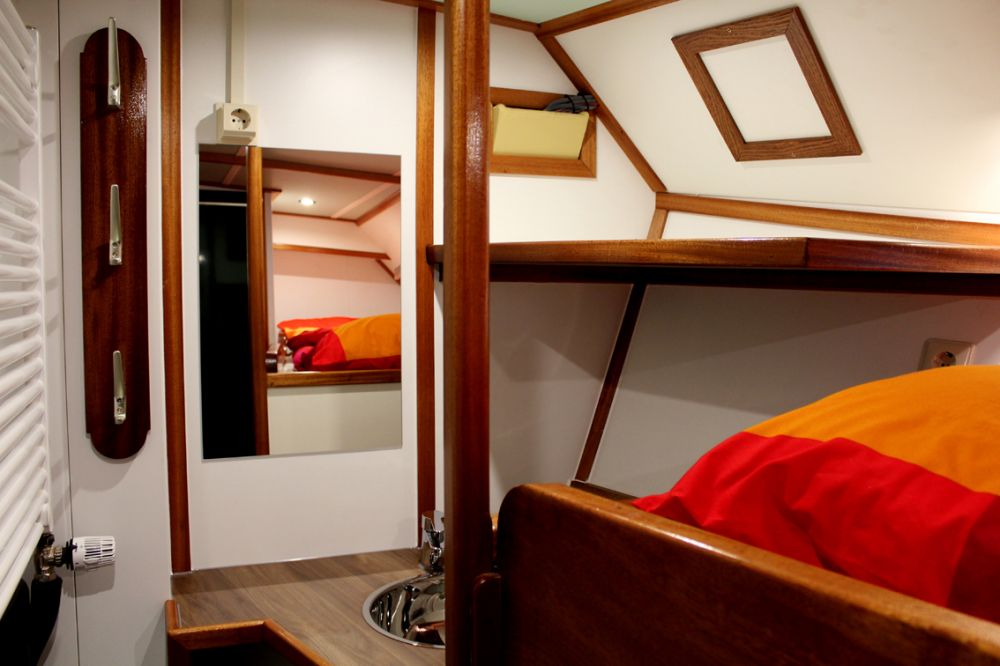 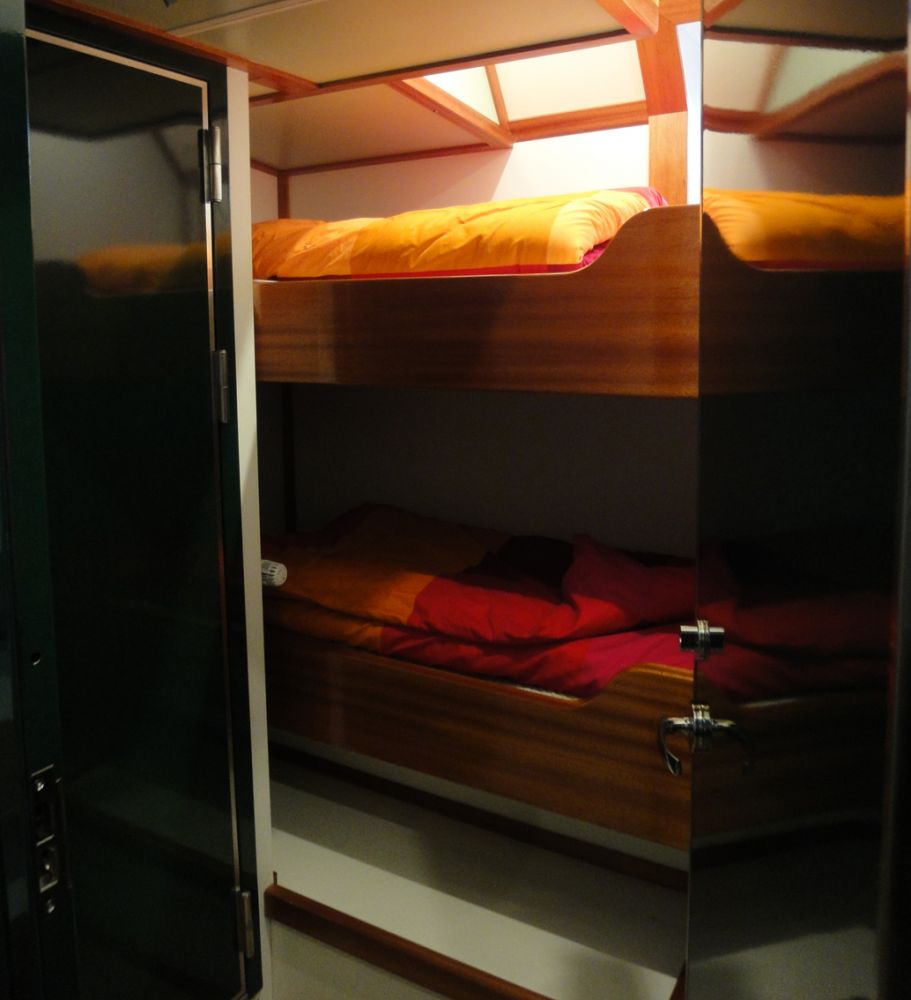 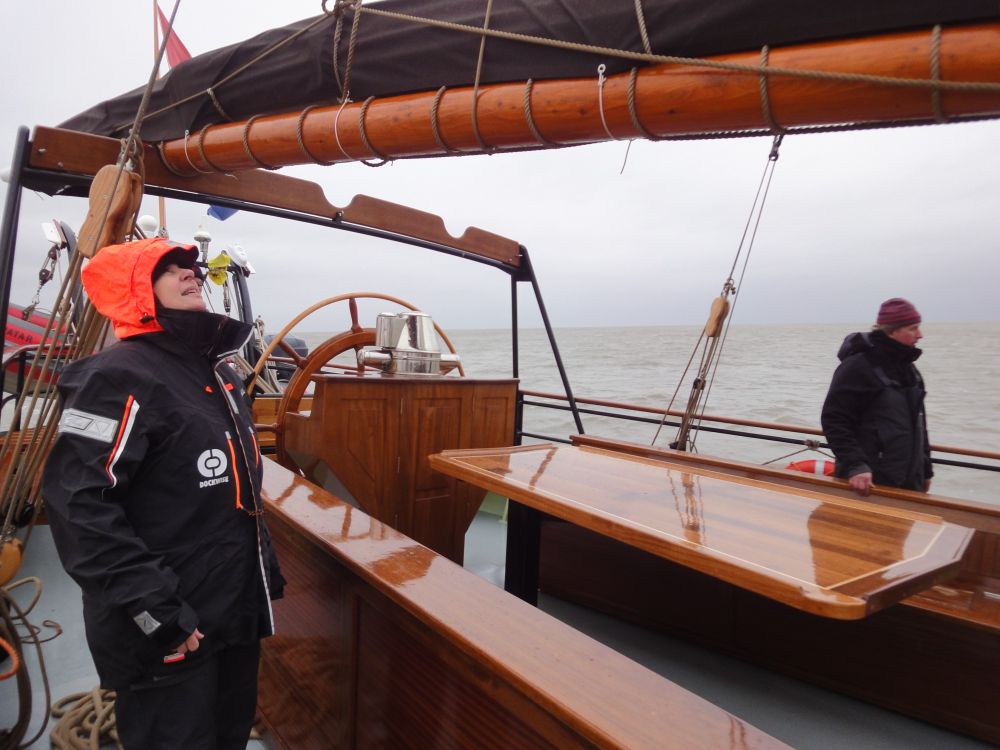 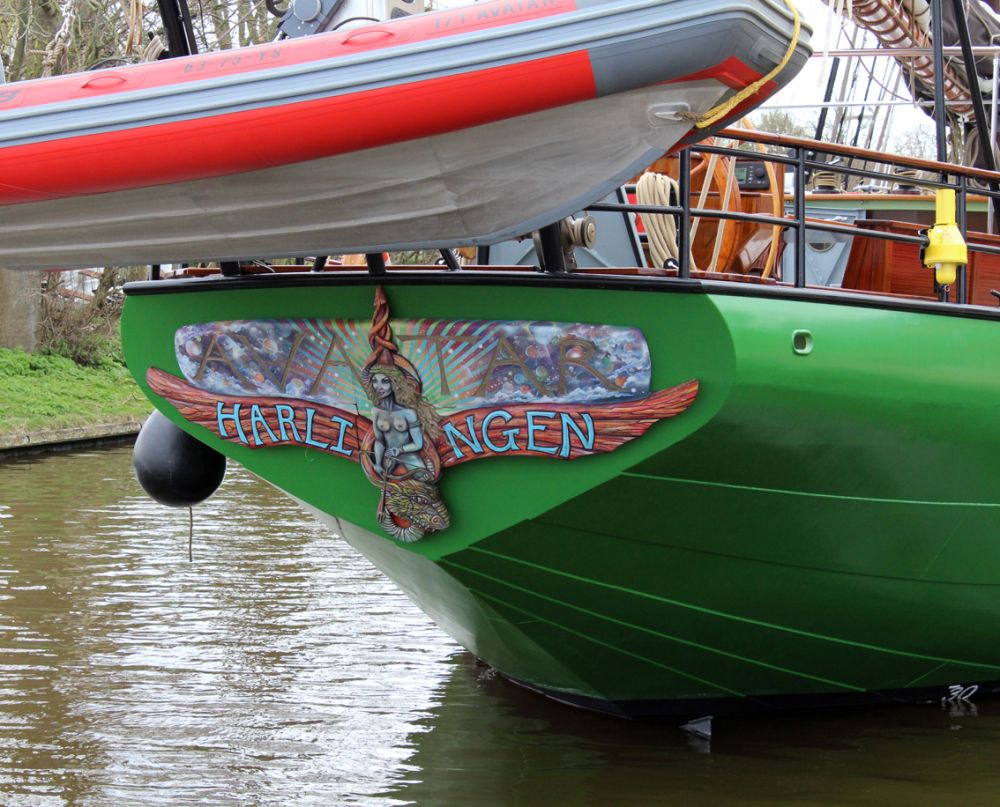 Tall Ship Avatar Technical details Length: Overall: 31.50m Waterline: 22.74m Sails: 240 m² (without square sails) 310 m² (with 2 square sails) 450 m² (with all sails) Other: Beam: 6.23m Draft: 3.00m Written by Aleksandr Mariy 1830
Your topic / Sir Robin Knox-Johnston refits his famous yacht Suhaili« : 24.03.2017, 16:54:30 »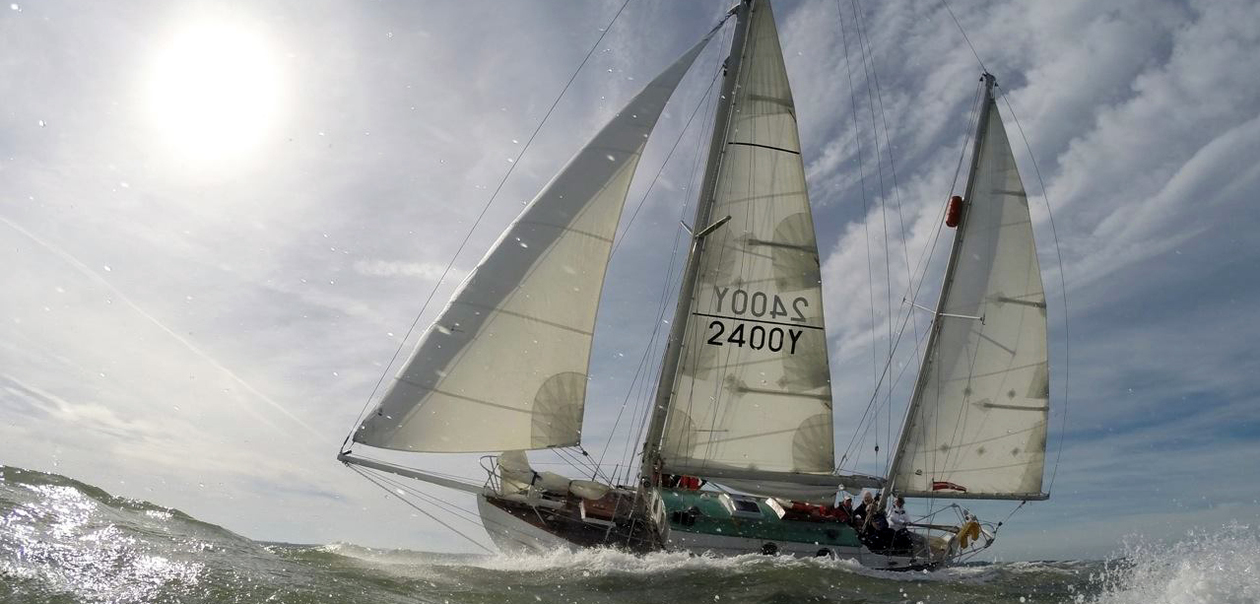 The completely refurbished Suhaili on her first outing at the 2016 Hamble Classics Regatta Suhaili was famously the yacht first sailed non-stop around the world single-handed in the 1968-69 Golden Globe. Following a recent refit by her owner Sir Robin Knox-Johnston, she’s back on the water. Adrian Morgan went aboard. Suhaili, with Robin Knox-Johnston at the tiller, crossed a start line off Falmouth. Few saw them off, and fewer still gave this 29-year-old merchant seaman and his heavily-laden boat any chance of winning the Golden Globe Trophy, put up by The Sunday Times. They were wrong; of the nine who entered, only one finished. Thanks to the little craft’s strength and her skipper’s tenacity, they were back – almost in one piece – 313 days later to become the first to circumnavigate the world, non-stop and alone. Having earned her place in yachting folklore, Suhaili spent a spell on show at the National Maritime Museum, where she began to dry out alarmingly. “I had to do something before too long,” explains Sir Robin Knox-Johnston. “I told them, ‘If we don’t get her soaked she’ll open up. Leave her much longer and she’ll never recover.’ They told me they couldn’t soak her as there was a risk of Legionnaire’s disease.” So he took matters into his own hands, removing her in 2002 and personally restoring the yacht that had carried him into the history books. The bulk of the work was completed over the past three years, with Suhaili relaunched in time to be guest of honour at the Hamble Classics regatta in the autumn of 2016. Built in Bombay Suhaili, a William Atkins design derivation, was originally built in Bombay in 1963-64, of Burmese teak by Indian carpenters from drawings supplied by a firm in Poole, which advertised “full plans and a free advisory service”. This proved to be somewhat economical with the truth, as no rigging diagram was included (it transpired that was extra). Suhaili’s keelson was hewn from a 25ft log using traditional tools: adze, bow drill and hand saw. “We would watch, fascinated, as the adze, handled almost casually by the Indian craftsmen, produced as fine a scarph as any modern plane,” Knox-Johnston recalls in his book about the historic voyage, A World of My Own. Iron fastened teak was used for the entire construction: keel, planking, frames, deck and cabin top. The iron keel weighed two and a quarter tons, and was cast in two sections, held by 14 two-inch keel bolts. The stringers were six inches by six inches and all the planking one and a quarter inches. So massive was she that when launched on 19 December 1964, Suhaili floated two inches below her waterline. Knox-Johnston, his brother Chris and radio officer colleague Heinz Fingerhut, sailed Suhaili – the name given by Arab seafarers in the Persian Gulf to the south-east wind – for home, completing the final Cape Town to Gravesend leg non-stop in 74 days, averaging 112 miles a day. “Suhaili,” he wrote “had proved herself a seaworthy boat, able when close-hauled to sail herself for long spells without attention because of her remarkable balance.” It was the intimate knowledge of the boat gained over 10,000 miles, allied with Suhaili’s strength, her ability to sail herself and her skipper’s experience as a merchant seaman that was to give her the edge in the Golden Globe. Suhaili had not, however, been Knox-Johnston’s first choice. Determined to become the first man to sail alone around the world, he had approached English yacht designer Colin Mudie to design a 53ft steel schooner – light, strong and unsinkable. But without the necessary funds, everything led to the obvious answer, go in Suhaili, the boat he already knew so well. After a period of fitting out, Suhaili was ready. Her standing rigging was replaced – in tallowed plough steel not stainless – and her pine mizzen swapped for an alloy one. She had new sails and an elaborate wind-vane self-steering system, which projected from her quarters to clear the mizzen. Described by Knox-Johnston as “like one of Heath Robinson’s nightmares,” the entire contraption was swept away during the voyage. Restoring history Today Suhaili is back in fine order after a thorough refit, much of it undertaken by the owner himself, along with friends and family and the assistance of retired shipwright Keith Savill. The hull has been completely refastened, the old interior stripped.  Sketches of what needs to be rebuilt – this one of the starboard berth – are drawn on the cabin sides “The whole thing took three years. We spent two years just getting the old bolts out,” recalls Knox-Johnston, “We never thought it would end. “The timber was all good – hull and deck – apart from a thick coating of green slime. No, the real problem was the iron; it was Indian iron but any iron will give trouble after 50 years. Some of the fastenings were corroded to just 1mm thick. “We had to remove them all – 1,400 of them – and replace them with bronze. To begin with we were managing eight bolts in a day using just hammers. “Until we tried a hammer drill, and then two hammer drills, one each side. We were doing 80 a day then – we had to slow down and put in bronze or the old girl would have fallen apart.” To release one of the original keel bolts during the restoration, Sir Robin Knox-Johnston used Sarson’s vinegar as penetrating oil Suhaili was not recaulked, although Knox-Johnston says in retrospect it’s something he should have done. “There’s a few seeps here and there. I reckon she needs about 15 strokes a week, so it’s not serious. That’s about 1.5 gallons. 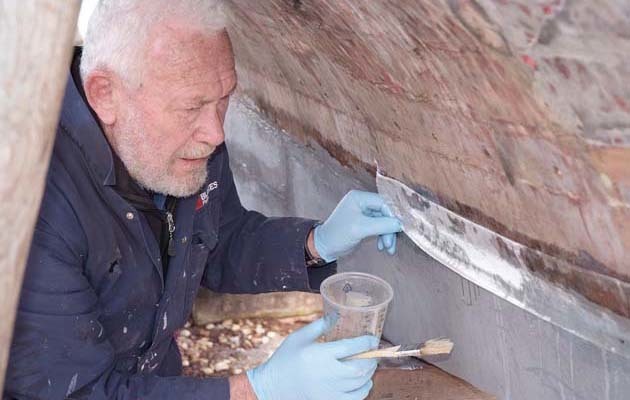 Sir Robin Knox-Johnston did much of the restoration work himself, here preparing the iron keel prior to applying epoxy/fibre tape. Photo PPL “We stripped the interior out entirely,” he comments. “I sanded the deckhead and hull to bare wood again, and it’s primed, ready for painting. “We kept the layout simple, just bunks, chart table and galley. Oh, and a loo. With a door this time.” Thus stripped, she was much closer to her designed waterline at her relaunch, and proved steady and remarkably fast with sheets slightly eased, her best point of sailing. “We also put in a few more wooden floors, as that was a problem I had on the round the world voyage. That strengthened her a bit. The restoration of Suhaili took 140 days and well over 3,000 man hours “So she’s much the same as she was, maybe a little stronger and certainly lighter. At the Classics regatta I reckon she was a little too light. She needs a bit more ballast to get her going. “She’s best on a reach, not great upwind. You can’t pinch her. She’ll just stop if you do.” 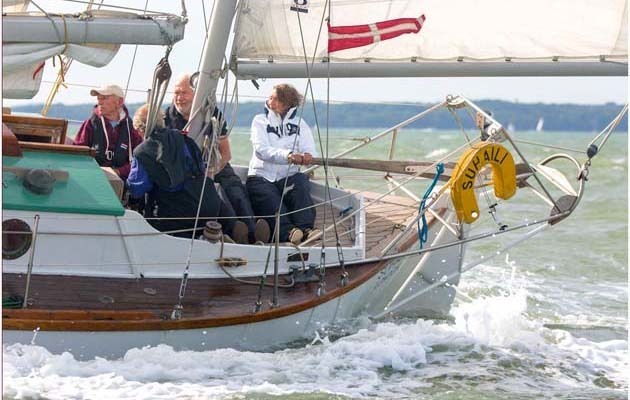 Sir Robin Knox-Johnston with his daughter Sara at the helm. He has never let anyone borrow Suhaili and almost never lets anyone else helm! Photo Nick Gill One of Suhaili’s worst traits had always been her habit of hobby-horsing in certain conditions, especially when heavily laden. She showed no signs in the Solent that day. A jib, single reefed main and full mizzen were sufficient. Her mizzen is far from an afterthought, and provides real drive, even more so with the huge mizzen staysail, for which conditions were too boisterous for us to set. Three new oak floors were added during the restoration that weren’t in the original – which was why Suhaili leaked at the garboards and had to be patched during the round the world voyage with a copper tingle Some elements of the refit are still a work in progress, the tiller being the next priority. “The tiller isn’t the original, it’s from about 1973. It’s oak and as rotten as an apple, bits falling off all the time. It’s the next job on the list.” As testament to her many sea miles, some items were left untouched: “We found the old penny that had jammed between the cabin top and a deck beam, which got there after we were knocked down in the Southern Ocean. We left it in situ.” If Sir Robin Knox-Johnston was to enter the re-running of the Golden Globe race in 2018, the recently refitted Suhaili would be as strong as ever and almost certain to knock days off her 1968-69 time. “Nothing will persuade me to do it again,” was the gist of his response to that suggestion. Suhaili’s rig is the one she was fitted with after being dismasted in 1990, when Knox-Johnston was rolled mid-Atlantic, and sailed to the Azores under jury rig 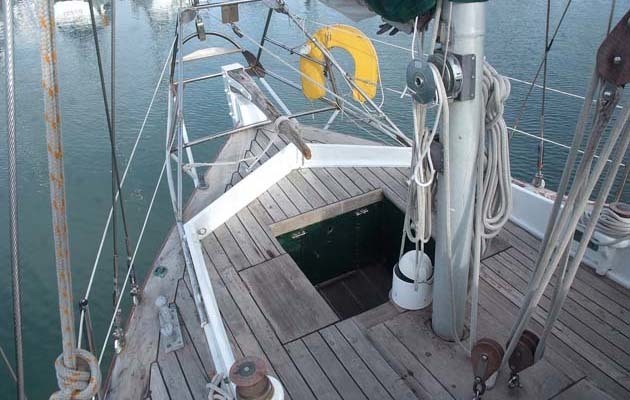 Suhaili’s cockpit is very small, with a breakwater to protect against waves from following seas. A steel-framed pushpit extends beyond the rudder to provide a sheeting point for the mizzen boom, and from which the yacht’s original wind vane self-steering system was hung. Knox-Johnston nicknamed the wind vane ‘The Admiral’ because, like some flag officers, the control system of blocks and pulleys caused some considerable friction. Photo PPL. 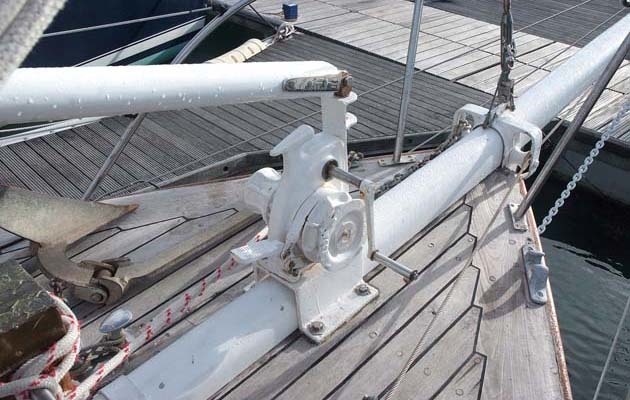 The original deck capstan was purchased from Glasgow-based chandlers Simpson-Lawrence, and shipped out to India during the yacht’s construction. Photo PPL 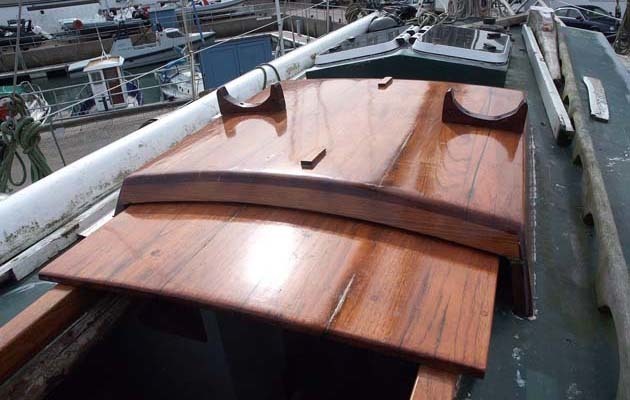 Suhaili’s original hatches were revarnished at home over the winter. The entire boat was originally built of teak. Photo PPL 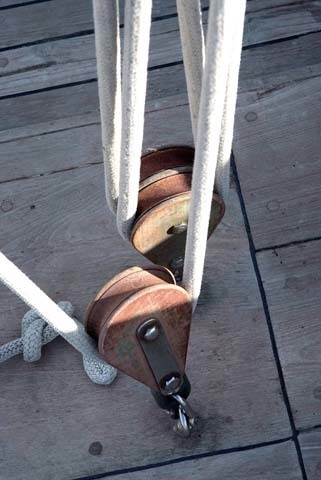 The original Tufnol sheet blocks still working well after 50 years. Photo PPL 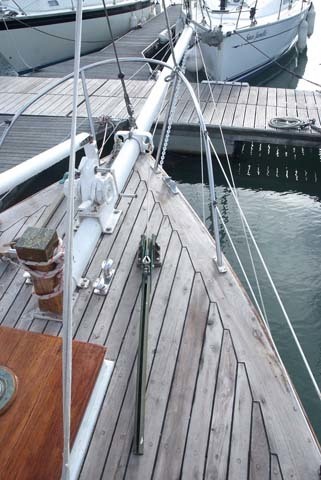 The original bronze Highfield lever on the foredeck releases the forestay and jib halyard sufficiently to allow the sail to be pulled inboard and unhanked from the headstay, so nobody has to climb out on to the bowsprit. 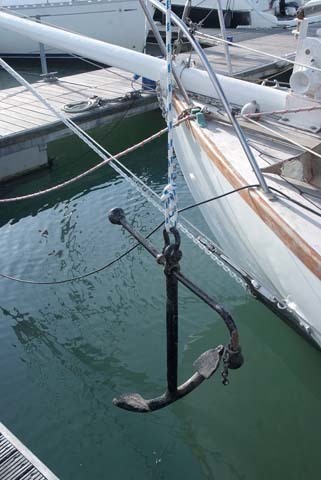 The original fisherman’s anchor (and chain) came from the SS Sirdana, a deck passenger and cargo ship from the British India Line on which Knox-Johnston served while stationed in India. Photo PPL Sir Robin Knox-Johnston Sir Robin Knox-Johnston, born 1939, is Britain’s most celebrated yachtsman. His 1968-69 voyage secured his place in the history of yachting, but he also led teams in Admiral’s Cup, Whitbread and Round Britain races, and co-skippered the Jules Verne record-holder Enza in 1994. He sailed single-handed round the world a second time – in the 2007 Velux 5 Oceans Race, at the age of 68 – was third in class in the 2014 Route du Rhum, and now runs Clipper Ventures, which organises the Clipper Round the World Race. After retiring from sailing for a while, he was behind the building of Troon, Mayflower, Mercury and St Katharine Dock marinas. He is patron of the Cruising Association, elected a Younger Brother of Trinity House, president of the Little Ship Club, and honorary member of at least a dozen yacht clubs worldwide. He has been voted the YJA Yachtsman of the Year four times, he won the Royal Institute of Navigation gold medal in 1992 and was knighted in 1995. Suhaili specifications LOA: 13.41m (44ft) Hull length: 9.88m (32ft 5in) LWL: 8.53m (28ft) Beam: 3.37m (11ft 1in) Draught: 1.67m (5ft 6in) Displacement: 9,876kg (9.72 tons) Sail area: 61.8sq m (666sq ft) Source
|

Нет пользователей онлайн.
Здесь может быть Ваша реклама!
|
SMF spam blocked by CleanTalk







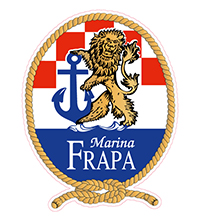
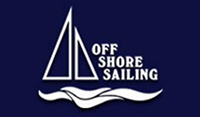


 Гостей: 532
Гостей: 532 Скрытых: 0
Скрытых: 0 Пользователей: 0
Пользователей: 0 Cinco de Mayo
Cinco de Mayo